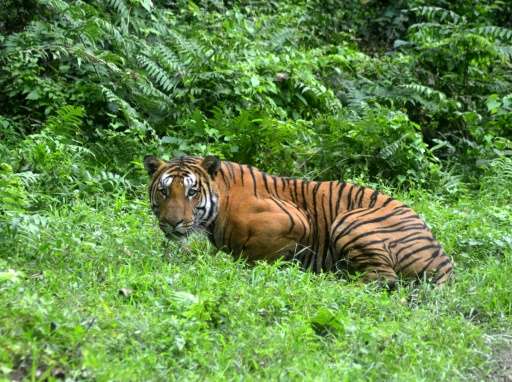In coming years, the threat of infrastructure projects could pose the biggest risk to tigers
Poaching and habitat loss have devastated tiger populations but in the coming years, the new threat of infrastructure projects could pose the biggest risk to the imperilled cats, a report said Wednesday.
The World Wildlife Fund (WWF) said Asia's massive infrastructure development needs are expected to see 11,000 kilometres (6,800 miles) of roads and railways cut through tiger habitat.
While such projects are unlikely to absorb a huge amount of tiger living space, they will "slice tiger habitats into smaller and more isolated fragments," WWF said in its report "The Road Ahead."
Intrusions into tiger landscapes prevent the animals from having the vast uninterrupted spaces they need to hunt, while also raising risks of tiger deaths through vehicle collisions and other conflicts with humans.
"Is the regional community ready to accept the loss of tigers and all that they stand for as a result of the unmitigated fragmentation and destruction of their habitats by new highways and transport networks?" WWF asked.
The conservation group, citing the Asian Development Bank, estimated the continent was likely to spend $8 trillion (7.5 trillion euros) covering its infrastructure development needs by 2020.
"While there have been many linear infrastructure developments in tiger range countries in the past, it is the sheer scale and speed of future development that poses one of the greatest challenges," WWF said, urging planners to minimise impact on tiger habitat.
According to the Switzerland-based group, there are less than 4,000 tigers left in the wild, down from 100,000 a century ago.
The remaining wild tiger population is spread across 12 Asian countries and Russia's far east.
WWF said there is evidence that the wild tiger population is inching back up for the first time in 100 years, but warned those gains can be reversed by infrastructure projects that fail to prioritise the animals' needs.
© 2016 AFP






















